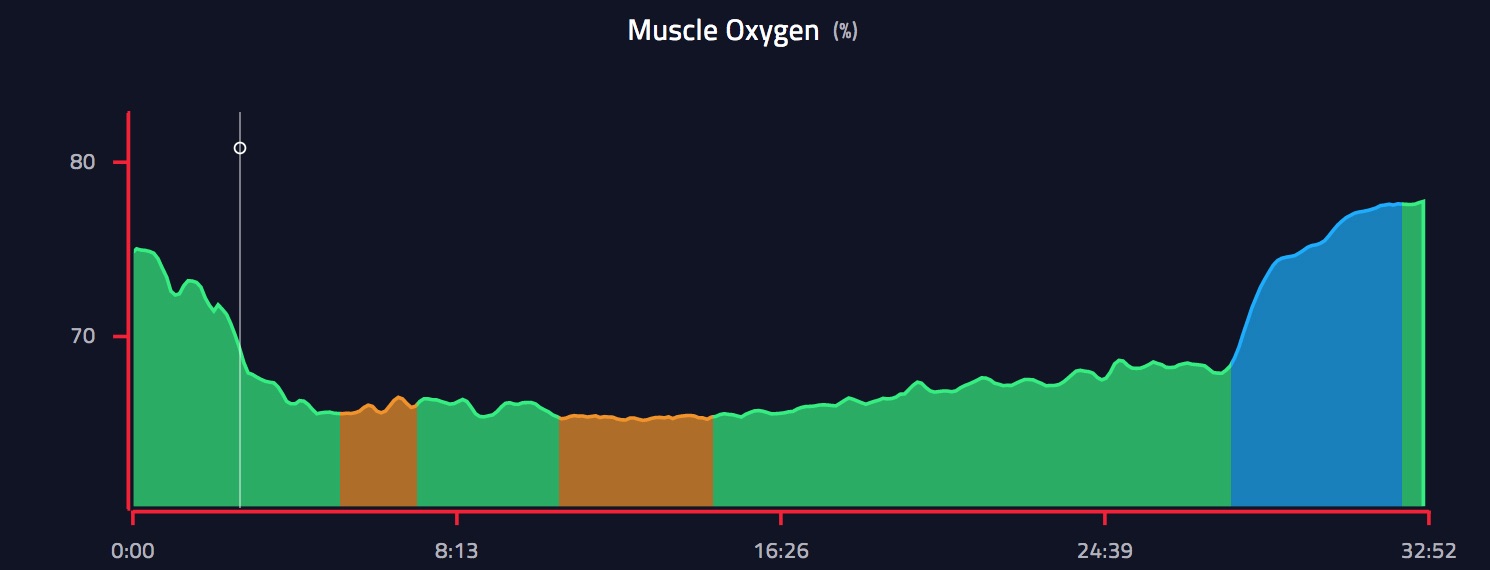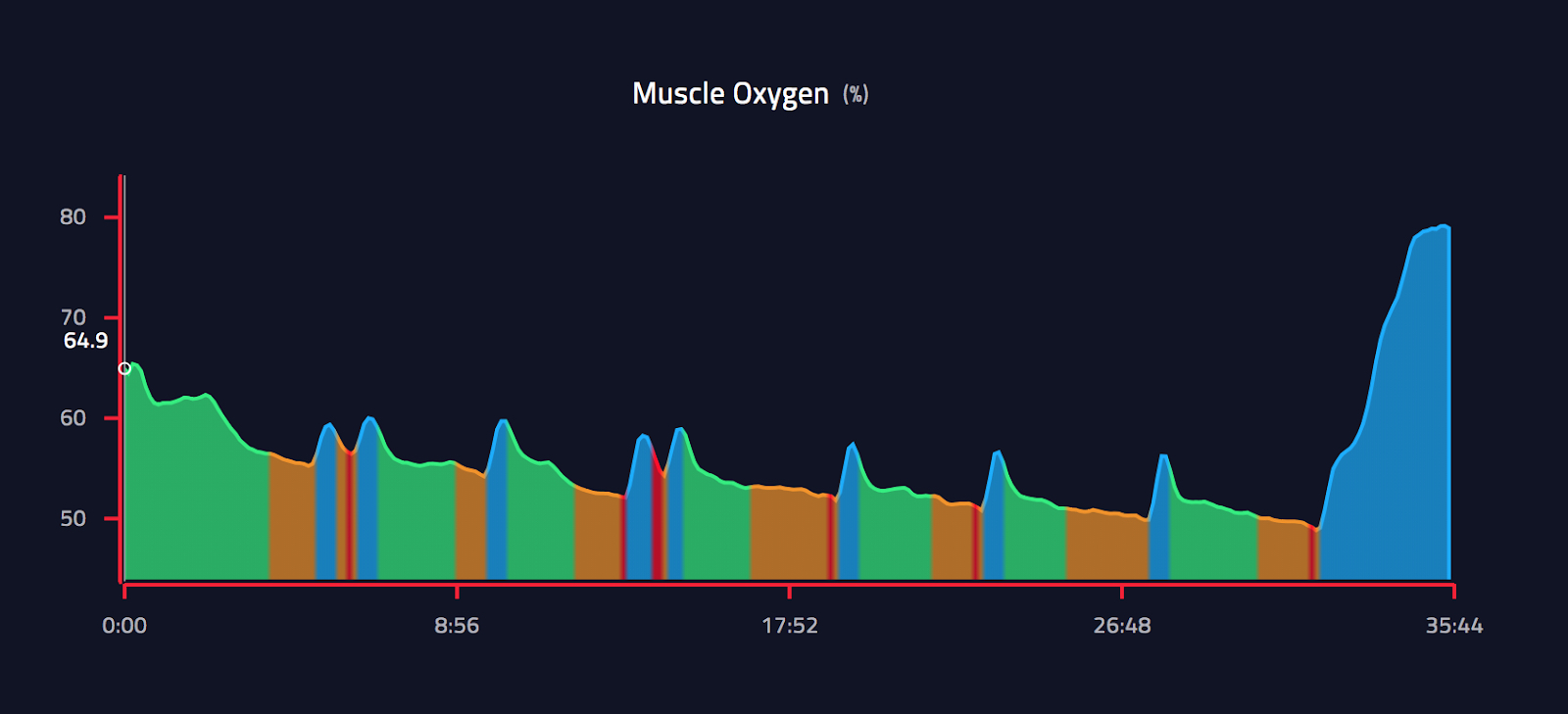
The Effects of Altitude Training on Muscle Oxygen and Performance
High performance athletes look for the extra edge because every second matters. Unlike better shoes or a lighter bike, altitude is a variable that affects the cardiovascular system. It’s no surprise that many elite training plans include significant time training in the thinner air found at altitude. However, altitude training isn’t just for the elites. In fact it can be an asset towards health and fitness in general.
So how does it work, exactly?
The human body is incredibly adaptable. At high altitudes (anything above 5,000ft) the air becomes thinner and pressure is reduced. Because of this, blood delivers less oxygen with each breath and your body has to work overtime to maintain normal function. The higher the elevation, the more the impact can be felt. Symptoms such as stomach discomfort, dehydration, and dizziness can occur and performance can be slowed… that is, until your body adapts.
Oxygen Elevation Training (OET) with the Humon Hex
We’ve partnered with Oxygen Rally, a unique studio founded by health and fitness coach Owen Monroy in Danville, CA. Monroy specializes in what he calls Oxygen Elevation Training (OET) which utilizes an innovative technology to increase the benefits of altitude training with oxygen-boosted recovery.

Owen contacted us because he was looking for a monitoring solution to help better guide clients to natural increases in HGH, EPO, VO2 max, blood flow, nutrient delivery, anti-inflammation, health, and longevity. At Oxygen Rally clients of all ages and fitness levels have been using the Humon Hex to monitor muscle oxygen (SmO2) during workouts. Owen has used these insights to better serve his clients as well as learn to manage his own training routines more effectively.
Altitude endurance training case study
During a standard endurance workout at sea level, (while maintaining a moderate-intensity) you’d expect a relatively flat graph as seen below. The demand in oxygen is changing very little as your effort and environment is consistent.

Example of a moderate-intensity standard endurance workout
During the equivalent workout (steady cadence, moderate-intensity endurance) in the context of an OET session, the effects on the body are completely different.
Below is the muscle oxygen data from a 35 minute endurance cycling workout at Oxygen Rally where the athlete maintained the same gear and cadence… the difference is significant.

Example of a moderate-intensity endurance workout with OET
Oxygen Elevation Training (OET) Endurance Workout:
Cadence: Steady 80 RPM
Challenge Air: 13% Oxygen (11,000ft)
Recovery Air: 80% Oxygen
Equipment: Humon Hex SmO2 sensor (right quadricep), SpO2 on fingertips, OET system
During the endurance workout, the altitude was increased to 11,000ft 9 times followed by 80% oxygen-rich air for recovery. The altitude was reduced when one of the following happened: either the athlete’s SpO2 dropped below 78% OR the Humon Hex identified the red-zone, meaning the athlete’s muscles were working above their limit. To see what the difference between SpO2 and SmO2 is please use this link for comparison:
Although the athlete completed the exact same workout, you can see that the muscle oxygen graph during OET is completely different. We see an almost immediate decrease in muscle oxygen (resulting in greater perceived exertion levels despite steady cadence). The graph no longer shows a steady-state (flat graph) muscle oxygen saturation. The thin altitude air means less oxygen is being delivered to the muscle, causing the body to work harder in its adaptation to maintain the steady cadence. When the Humon Hex hits the red-zone or the SpO2 reads below the chosen target, the altitude is reduced. With the flip of a switch the athlete enjoys oxygen-boosted recovery breaths before re-entering for another bout with altitude.
Oxygen Rally harnessing an edge with the Humon Hex
Monitoring SmO2 during OET allows the trainer to optimize the client’s intervals and recovery to maximize results. The real-time data allows athletes to distinguish (and therefore target) different limiters in their performance. During the 1st, 3rd, and 8th intervals the athlete never actually reached his red-zone limit, yet the interval was abandoned when the respiratory challenge became too great. This indicates that the muscle was working efficiently and the training challenge was being passed to the respiratory system. In those specific cases, the Hex shows that the athlete could have increased resistance (because their muscular limit was not reached) even though their respiratory system was approaching its limit.
Training at altitude can be advantageous because of the body’s incredible ability to adapt to new environments. As highlighted above an athlete’s body will recognize altitude as a stimulus to produce more red blood cells as well as open the vascular system for better oxygen and nutrient delivery. The effect can enhance athletic performance and can be an incredible tool for promoting recovery, health, and longevity. If you have any questions about oxygen elevation training please reach out to Owen on instagram @oxygenrally or email info@oxygenrally.com. You can also contact us at Humon on Facebook or Instagram @behumon!

